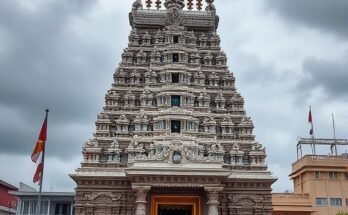Saving soil is crucial for the health of our planet and future generations. Soil is a finite and valuable resource that plays a vital role in agriculture, ecosystems, and maintaining biodiversity. Here are some ways to contribute to soil conservation and protection:
- Reduce Soil Erosion:
- Plant cover crops: Cover crops like clover and legumes can protect the soil from erosion by stabilizing it with their roots.
- Use mulch: Applying mulch to your garden or agricultural fields helps prevent soil erosion caused by wind and water.
- Practice Sustainable Agriculture:
- Implement no-till farming: No-till farming reduces soil disturbance, conserving soil structure and preventing erosion.
- Rotate crops: Crop rotation reduces the depletion of nutrients in the soil, promoting its health and fertility.
- Avoid Overgrazing:
- Implement rotational grazing practices to prevent livestock from overgrazing and damaging the soil.
- Reduce Chemical Use:
- Minimize the use of synthetic pesticides and fertilizers, which can harm beneficial soil microorganisms.
- Compost and Organic Matter:
- Add compost and organic matter to your soil regularly to improve its structure, water retention, and nutrient content.
- Terracing and Contour Farming:
- In hilly or sloping areas, implement terracing and contour farming to reduce soil erosion by controlling water runoff.
- Afforestation and Reforestation:
- Plant trees and establish forests to stabilize soil, prevent erosion, and enhance biodiversity.
- Wetland Conservation:
- Protect and restore wetlands, which play a crucial role in soil and water conservation.
- Education and Awareness:
- Raise awareness about soil conservation and its importance among communities, farmers, and policymakers.
- Legislation and Regulation:
- Support and advocate for policies and regulations that promote responsible land use and soil conservation.
- Soil Testing:
- Regularly test your soil to assess its nutrient content and pH levels, allowing for targeted and efficient use of fertilizers.
- Community Involvement:
- Get involved in local soil conservation efforts and community projects aimed at protecting and preserving soil resources.
- Research and Innovation:
- Support and engage in research initiatives focused on sustainable agriculture and soil conservation practices.
- Responsible Land Development:
- Encourage responsible land development and construction practices to minimize soil disruption and erosion.
- Reduce Plastic Pollution:
- Minimize the use of single-use plastics, which can end up contaminating and degrading soil.
Save Soil is a movement that has germinated from a seed that was planted 24 years ago by Sadhguru. In 1998, some environmental agencies predicted that by 2025, 60% of Tamil Nadu – India’s southernmost state – will become a desert. But what Sadhguru observed and experienced was worse than what the agencies had predicted. This led Sadhguru to launch a movement to revitalize the world’s severely depleting soil, water and agriculture.
Save Soil: A Movement that Began 24 Years Ago | Sadhguru
Sadhguru describes the nature of soil to elucidate how it is a highly sophisticated living organism, and the very basis of our lives. He also speaks about #ConsciousPlanet – a global movement to mobilize over 3 billion people to initiate a conscious approach to soil and planet.
Sadhguru describes the nature of soil to elucidate how it is a highly sophisticated living organism, and the very basis of our lives. He also speaks about #ConsciousPlanet – a global movement to mobilize over 3 billion people to initiate a conscious approach to soil and planet.
We must impart to every human being that soil, water, and air are not resources to be used and thrown away. These are life-making ingredients.



